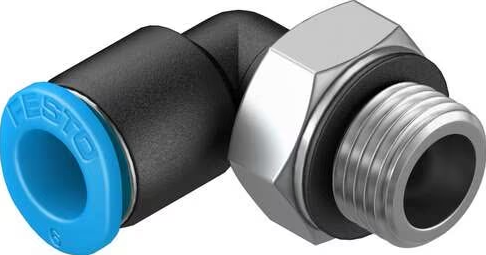In pneumatic systems, the choice of fittings is important for ensuring smooth and dependable operation. These fittings serve as the linchpin, connecting components and facilitating fluid flow throughout the system. With many types available, each tailored for specific tasks, let’s review pneumatic fittings and uncover their diverse types, functions, and features.
Types of Pneumatic Fittings
Pneumatic fittings encompass a diverse range of types, each tailored to specific needs within pneumatic systems.
Push-to-Connect Fittings
These fittings are designed for easy and quick installation, making them perfect for situations where tools or specialized knowledge aren’t available. They’re commonly used in scenarios where parts need to be assembled and disassembled frequently, like during maintenance or prototype testing. With features like O-ring seals to prevent leaks and a push-in mechanism for effortless tubing insertion, they offer a hassle-free solution for connecting pneumatic components.

Source: https://quotebeam.com/search/partCategory/pneumatic-fittings/380
Threaded Fittings
Threaded fittings create a secure connection by screwing onto threaded ports or adapters. They come in various sizes and configurations to suit different system requirements, making them adaptable to various applications. These fittings excel in environments with high pressure or temperature demands, ensuring strong and reliable connections that can withstand challenging conditions.
Barbed Fittings
Barbed fittings utilize ridges or barbs to grip onto tubing tightly, creating a secure seal. They are particularly suitable for flexible tubing materials like polyurethane or nylon, offering versatility in pneumatic system design. These fittings are commonly employed in applications where flexibility and ease of installation are crucial, such as pneumatic circuitry in robotics or automation, providing a reliable connection solution.
Compression Fittings
Compression fittings rely on compression rings or ferrules to establish a tight seal between the fitting and tubing. Known for their durability and reliability, they are ideal for high-pressure pneumatic systems. Widely used in industrial settings where preventing leakage and maintaining system integrity are paramount, compression fittings are essential components in hydraulic and pneumatic power systems, ensuring a secure and leak-free connection.
Features of Pneumatic Fittings
When designing pneumatic systems, it’s important to consider various factors, including the types and features of pneumatic fittings, to ensure efficient and reliable operation.
- Material Compatibility: Pneumatic fittings come in various materials like brass, stainless steel, and plastic, each offering unique properties suited to different applications. Brass provides durability and corrosion resistance, stainless steel offers strength and high-temperature resistance, while plastic fittings are lightweight and corrosion-resistant.
- Operating Pressure and Temperature Range: Understanding the pressure and temperature requirements is crucial for selecting fittings. Fittings are designed to operate within specific ranges to ensure optimal performance and safety, preventing issues like leaks or malfunctions. Considering these ratings ensures compatibility with the application’s needs, whether it’s low-pressure or high-temperature conditions.
- Connection Method: The fitting’s connection method influences installation, maintenance, and reliability. Options like push-to-connect, threaded, barbed, or compression fittings offer distinct advantages. Push-to-connect fittings allow quick and tool-free installation, threaded fittings offer stability in high-pressure environments, barbed fittings provide flexibility, and compression fittings ensure leak-proof seals in high-pressure systems. Choosing the right method is essential for efficient system operation.
Understanding the types and features of pneumatic fittings is essential for designing efficient and reliable pneumatic systems. Whether it’s the simplicity of push-to-connect fittings or the robustness of compression fittings, selecting the right fitting type ensures optimal performance and longevity of pneumatic systems in various industrial applications.